Newspaper Tyumen news, in the face of Irina Tarabaeva, again I was able to talk...
Read more...
Makassar, Jayapura, Wamena, Dekai are not just names of the towns and locations but the connection points of air transport which functions here as a route-taxi. Only when an aircraft is packed it takes off! Anyway there are no other ways out as there are no roads between the towns and other locations! On our way to Wamena we stayed for some time in Jayapura: this airport would many times be on our way around the island and our way home.
The “civilized” view of the airport did not reach the town streets. I could not even choose a photo to post. There were lots of motor bikes, rubbish and crowds of the idly wandering Papuans. But I noticed one thing that total strangers congratulated the women in white clothes. As it turned out later the people thanked those ones who had performed hajj: on meeting them the former bowed to the latter. Though being the largest Muslim country – 260 million inhabitants, in Indonesia one can see the Islamic tolerance to other religions. Let us save the pleasant impression of the view of the mountainous part of the island as well as of the Islamic kindness in its Indonesian variant. After all, this is the place where we are going to meet the tribes of Dani, Lani and Yali.
Just imagine, the first European having set his foot on this land was the missionary Lloyd Van Stone who parachuted here at the end of 1954. This year is considered the beginning of the civilization development in the area of the Baliem river valley.
A flight to Wamena and … there is no airport here! :) Though the representatives of the Indonesian army are almost everywhere.
Some of them in quite strange masks…
But right on the runway we were met by a quaint Papuan merchant who was selling a tiara made of feathers of the bird of paradise, a knife made of the cassowary bone and some other authentic stuff.
Contrary to the expectations and despite the fact that the word Wamena means… “pigs”, the town greeted us with clean streets, weird transport and the Papuans willing to communicate, sell cultural items and take photos (though for money).


For example, just like this woman selling the remains of the ant-plant.
And this cheerful gentleman was following us from the plane towards the hotel just because someone from our group had given him a cigarette…
Then he ate some betel and allowed us to take a series of vivid pictures with bleeding teeth.
It was for a good reason that at the very beginning I rejoiced over the gradual penetration into the culture. Here in Wamena where they have communications means and electricity we had to come across the Papuan culture. There was an expressive poster on the wall in the hotel.
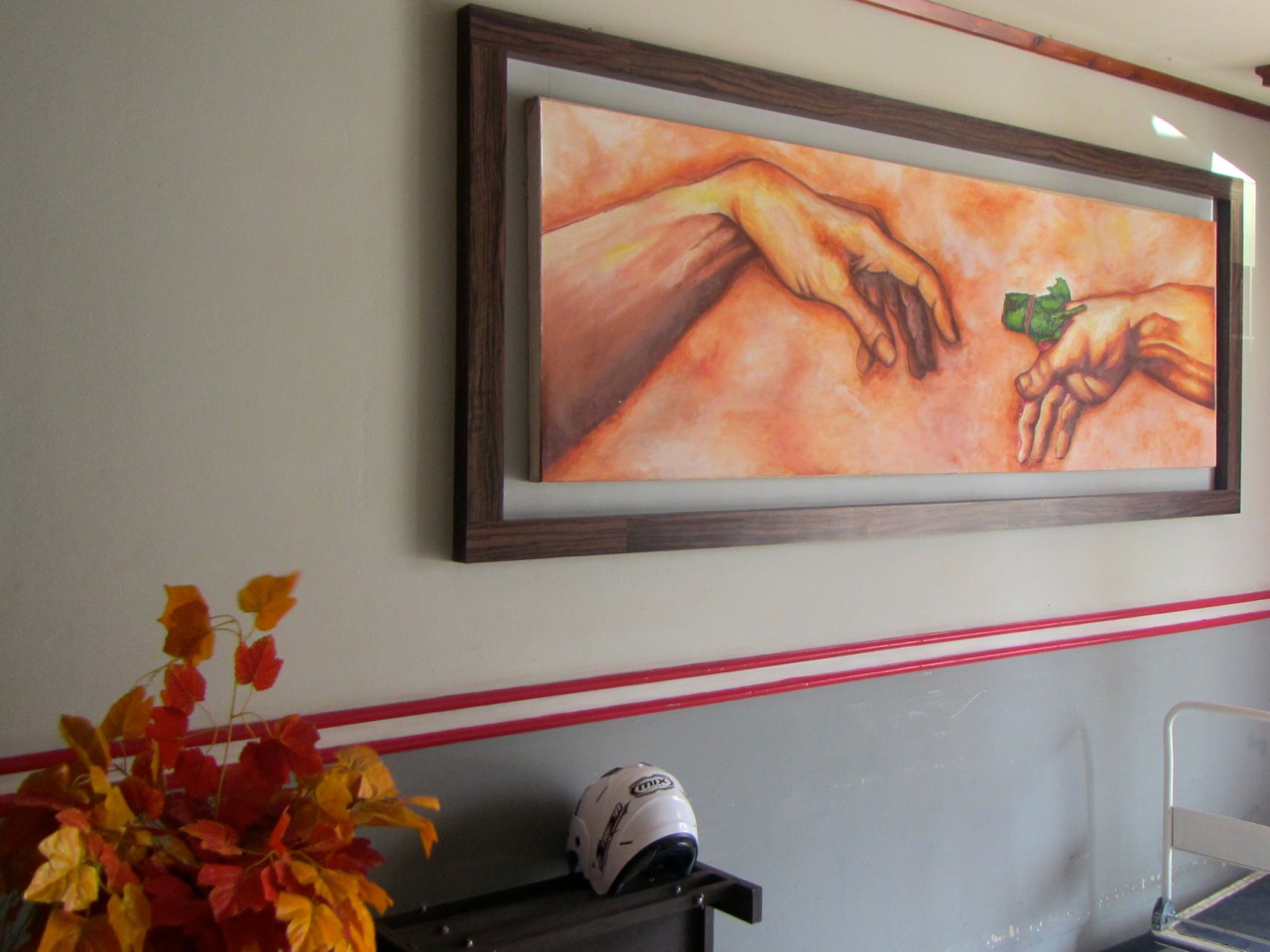
The matter is that many tribes in the mountainous part of Papua, especially the Dani people, have a tradition: when a family member dies the relatives bewailing his/her death just cut off a phalanx in memory of the deceased one, then they burn the phalanx and store its ash in some special place or throw it in the grave!
Not far from the hotel entrance someone sold the tools for this ritual… 
Anyway I was much impressed by the knife made of the cassowary bone. Cassowary is a big and very ancient bird, resembling an ostrich, which is able to kill a man with a single kick when protecting itself. The Papuans hunt for this bird.
Wamena is rather a quiet town entwisted with wires,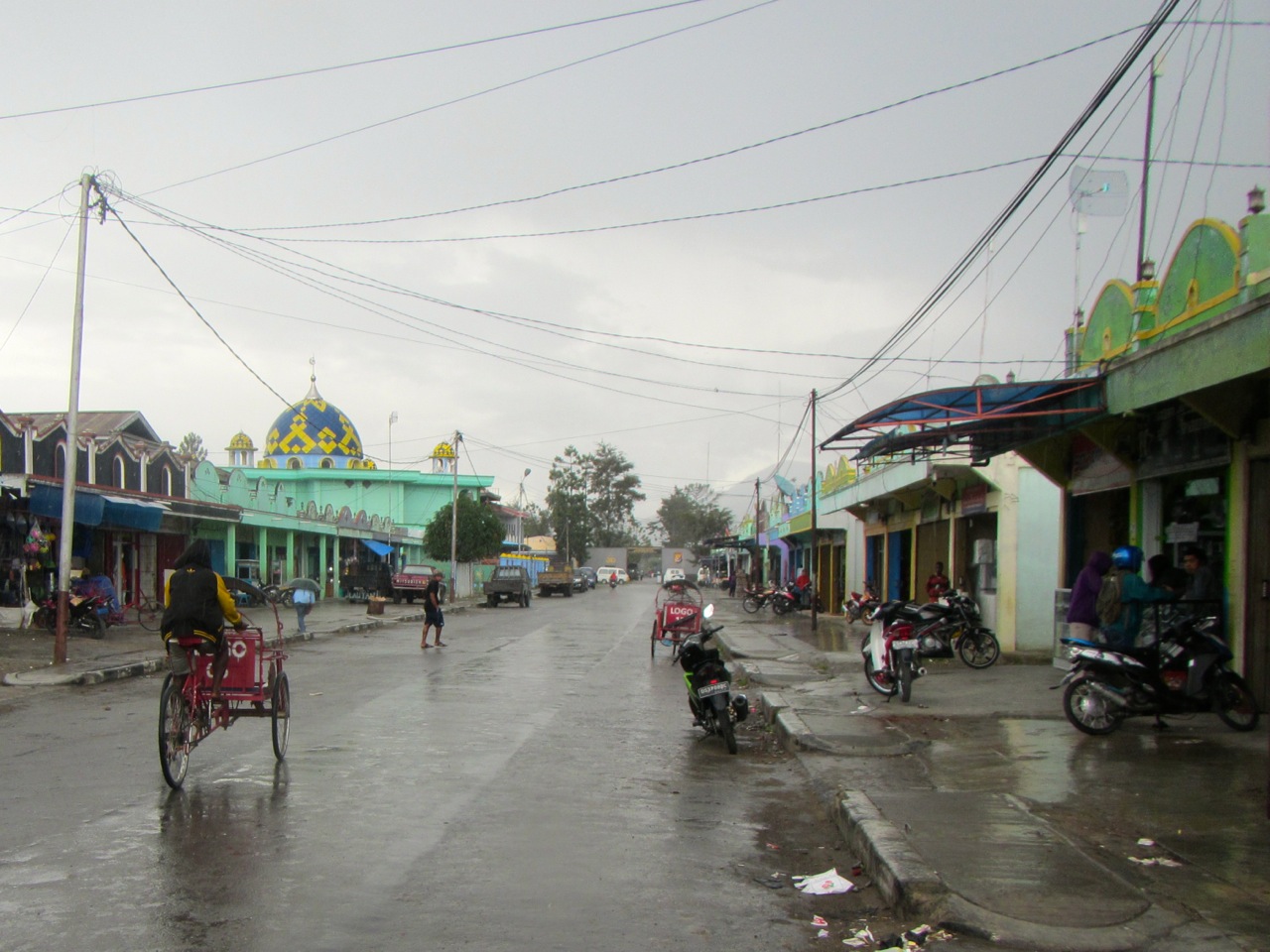
filled with merchant activities and needless fuss,
with quite a rare phenomenon of contemplating the outside world and the tourists

and eating betel, which is sold almost everywhere, in incredibly large quantities.
The mouth is wholly colored in red due to betel and for quite a long time, and you feel a little dizziness inside your head just like after smoking a cigarette. All the Papuans like betel and strongly recommended it to us. Many of us tasted betel and nothing, nothing, nothing happened… :)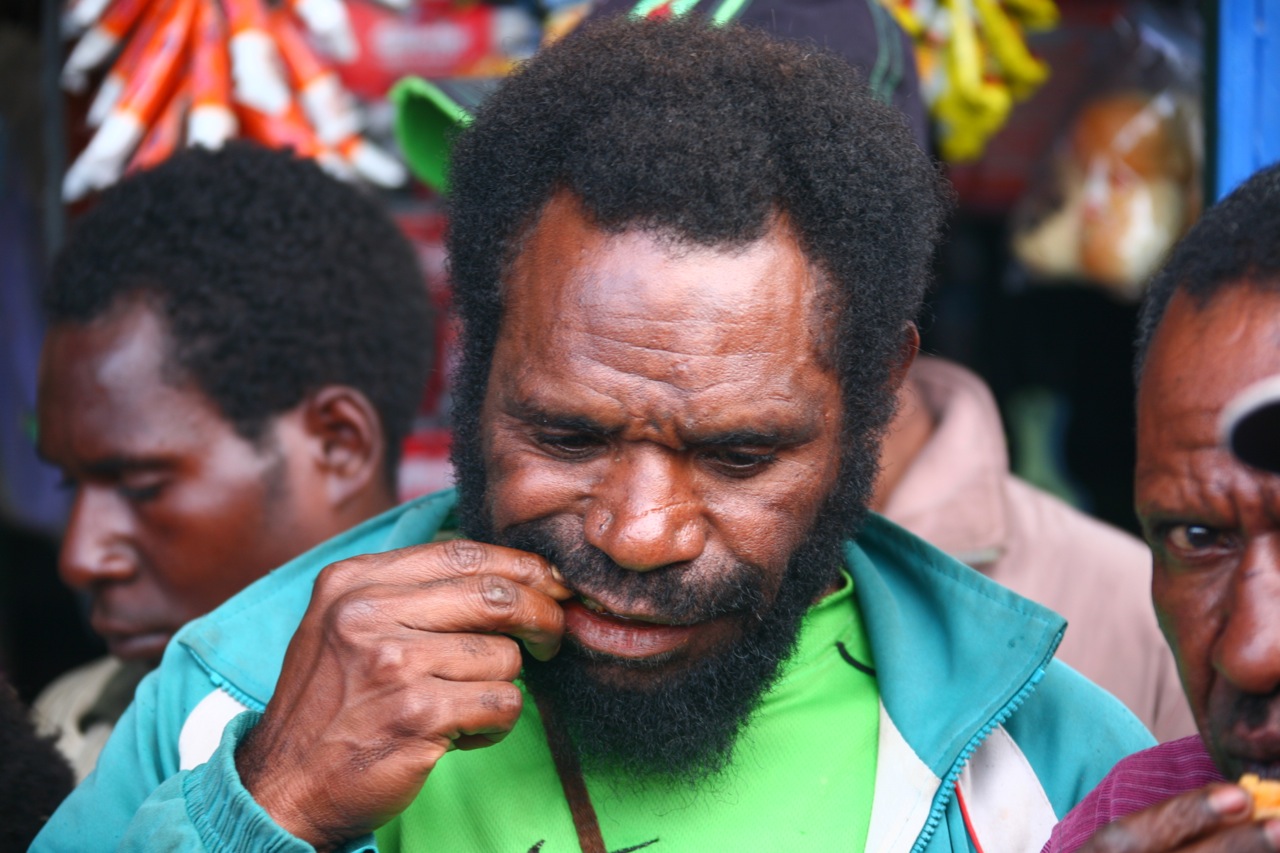
As people spit everywhere the streets and sidewalks are dirty with red stains as if somebody has just been hacked to death with an axe.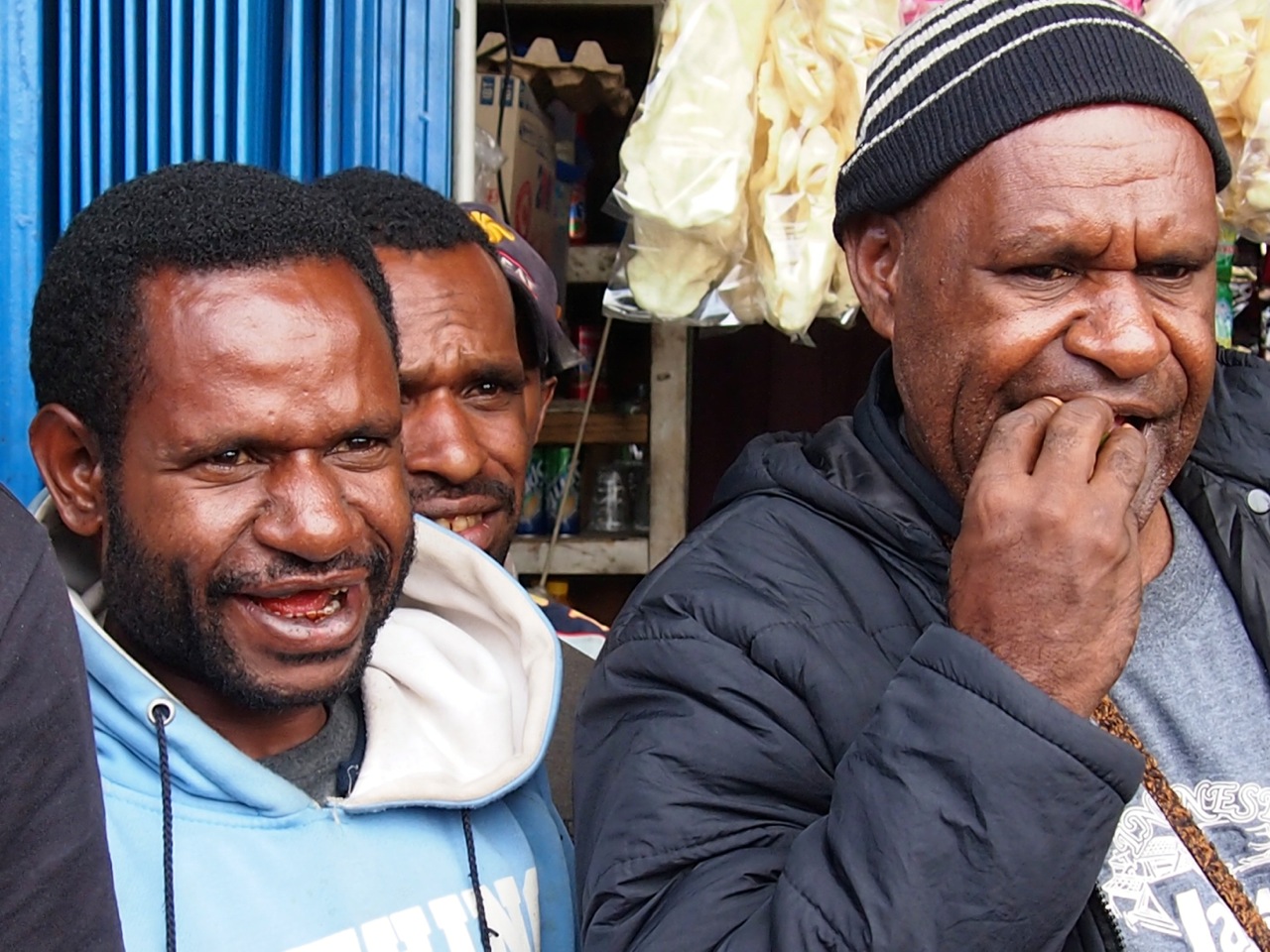
This delicacy is not just for the men: the women (though more seldom) treat themselves with this stuff.
This is their idle life… By the way, there is an interesting fact that the activity of Islam faced resistance here with regard to the food factor: the Papuans got to like pork which had been brought here by the Catholics and Protestants so much that it created an obstacle for the Muslims’ religion to spread among the people.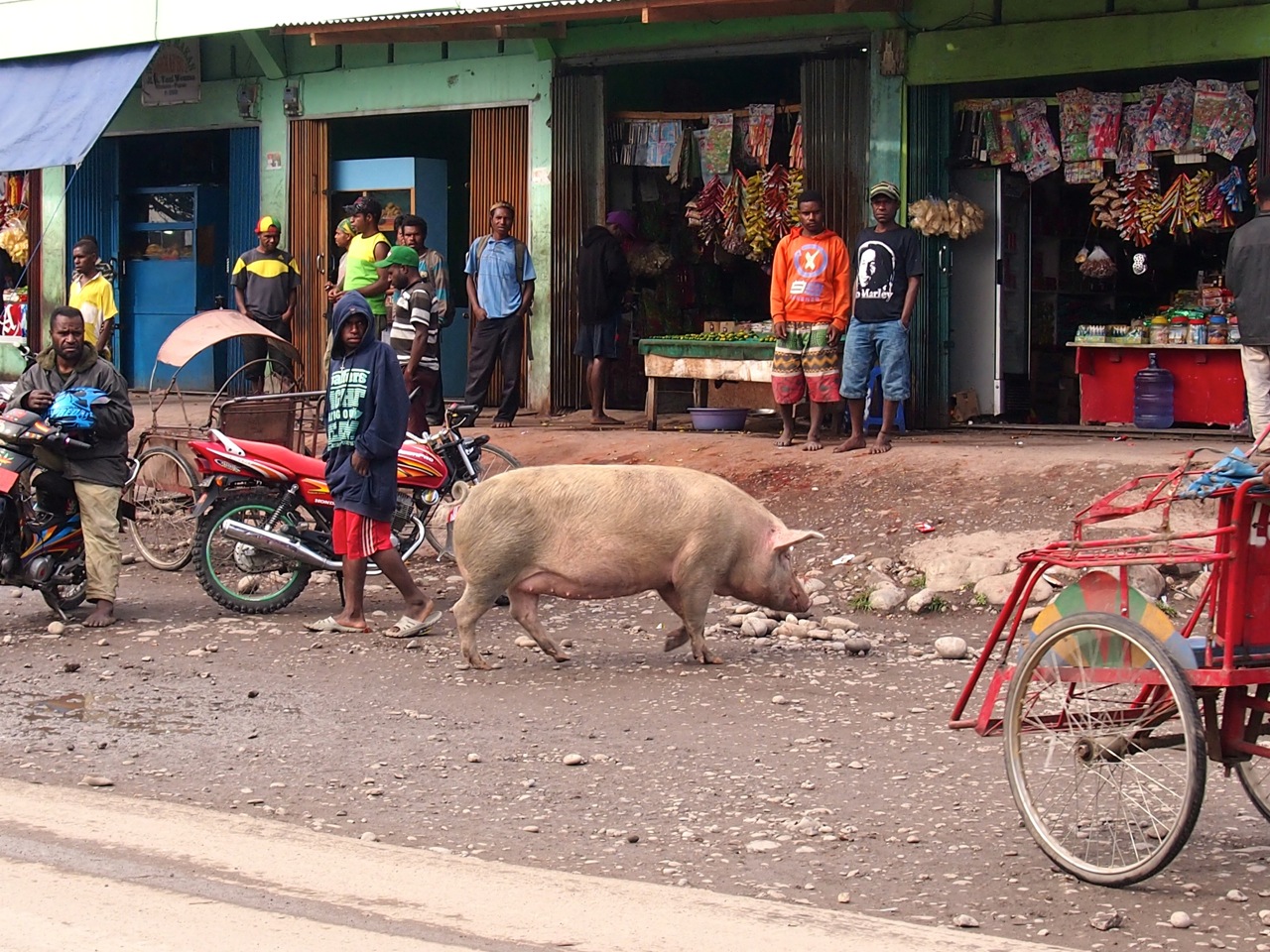
There is in fact no doubt that religion and art are the greatest transformers of culture! But if we made it clear with the religion then to get an idea of the art we had to go to… the market! Where else should we go? :)
The market greeted us with the absolute rejection of the sanitary and epidemiological requirements and the disgusting smell of the scrap heap which was entirely integrated into the market-place,
the atmosphere common to all market-places
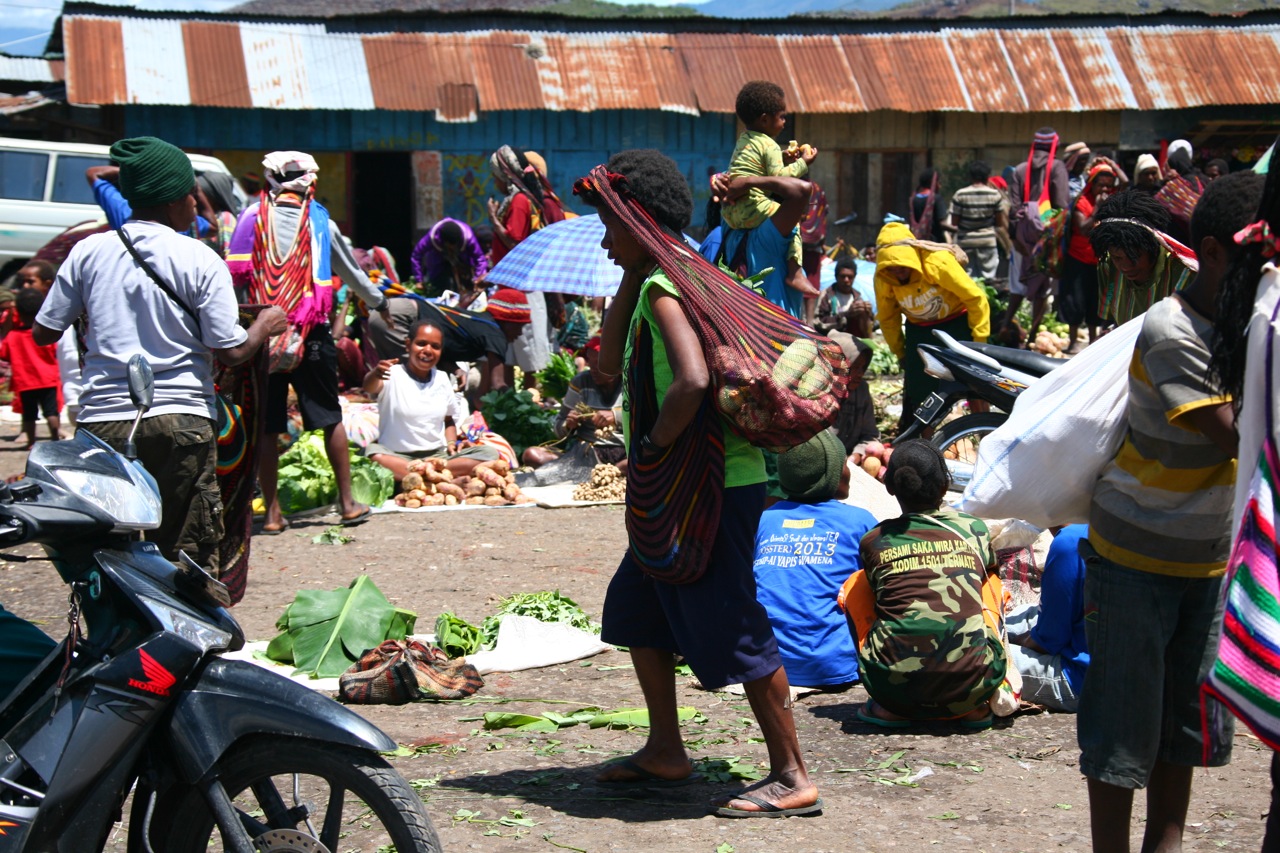
and the abundance of the things which were hunted after along the coast more than a century and a half ago by the most famous and much respected here Russian anthropologist, biologist and traveller Nikolay Nikolayevich Mikloukho-Macklay. Here one may find bananas,
as well as nuts and roots,
and “fresh” fish in the 40-degree heat,
and sago maggots (the story on how we ate them is a bit later … ),
and the sago flower necessary to cook them

and the ant-plant familiar to us

and other exotic delicacies
and of course the smoke which even makes the ears clog!
Everywhere one can see clothes and ornaments of various makes and… origin. Here is a head-dress made of feathers of the bird of paradise,

knitted rastaman berets and the seller looking like a rastaman,
ritual and casual ornaments made of bones of different creatures,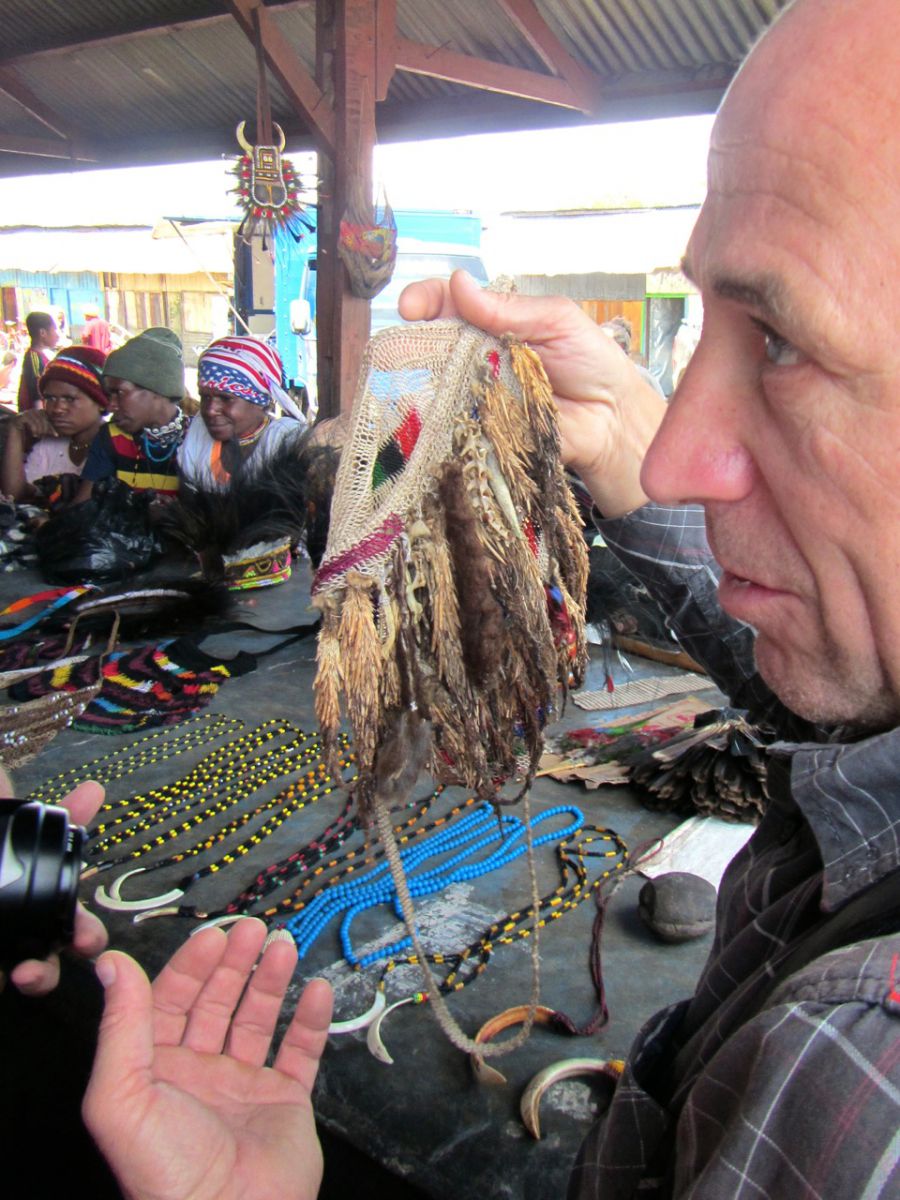
and the wild boar’s fangs,
at such extremely low prices that they even discourage to buy anything.
However, these are the handmade things of quite a good quality 

which is the basis for bargaining and argument for the “true” price. Sometime it is archly,
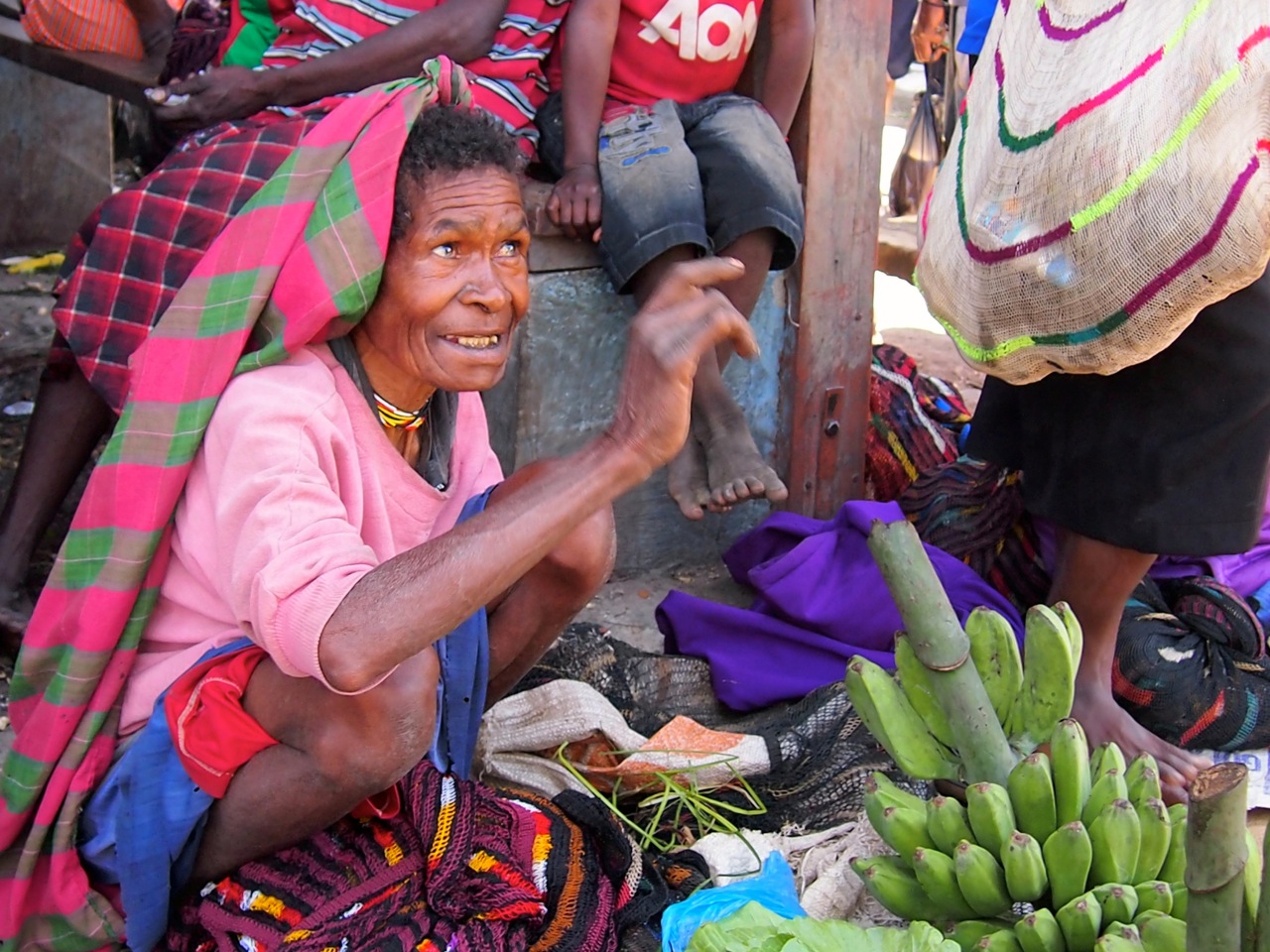
sometime suspiciously,

and sometime with unhurried indifference, commonly found in this place, like this very (not yet old) lady does.
Leaving the market-place I paid attention to the group of people sitting in the shadow of the shelter who contributed to the whole market-place composition with their presence. Obviously, they were «regulators” of the market life as I could judge by their confident look of big men. That’s why I took photos of them very carefully, you see why! :)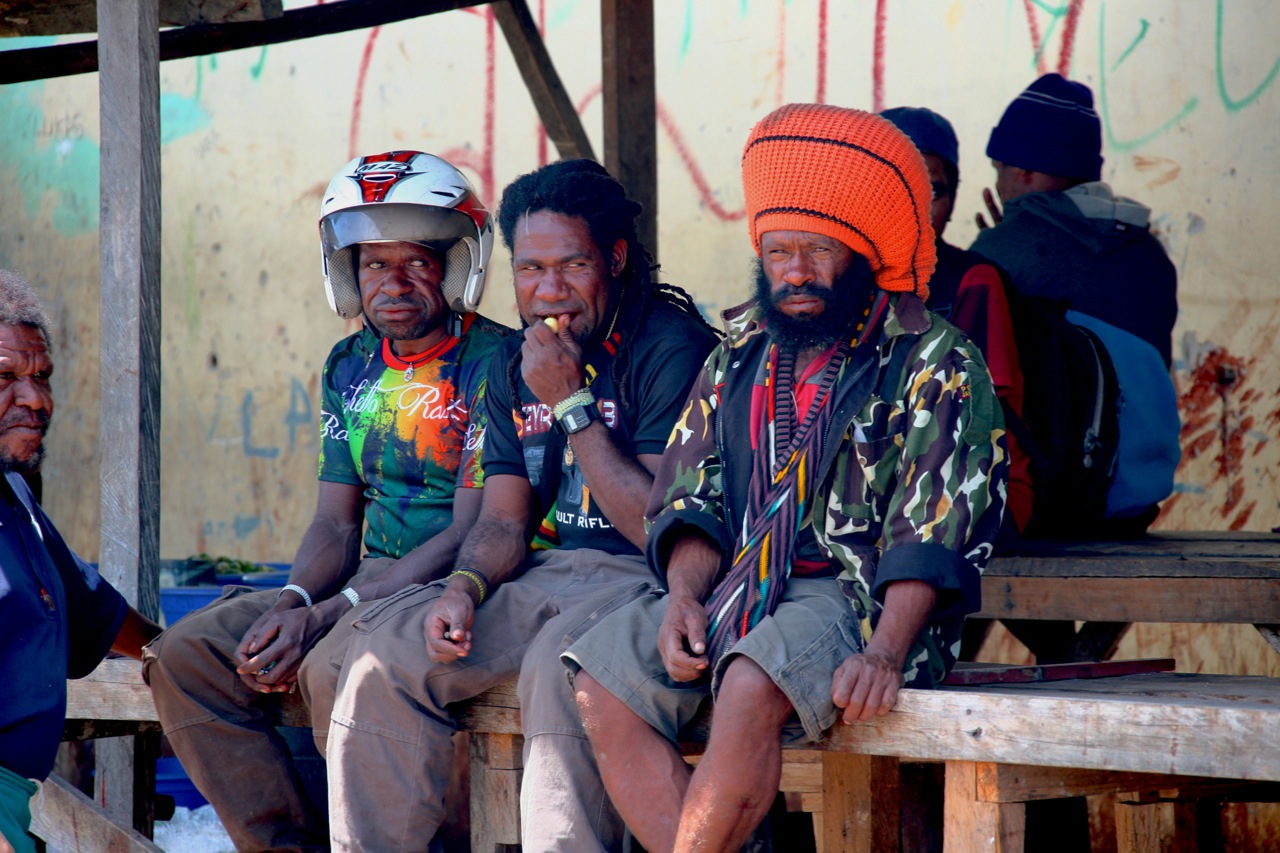
In contrast to them children are always children as well as the grown up men having left for far off lands are still real guys.
But be the life of the town and of the most picturesque market-place ever so interesting we have come here for a different thing. We are wending our way to the mountainous part of the island, to the north of Papua, to the place of the Dani people habitat, to the Baliem river valley.
Only God knows what tomorrow holds… and maybe this meditative Papuan with a penis gourd who watched us go with some kind of a mysterious look.
















